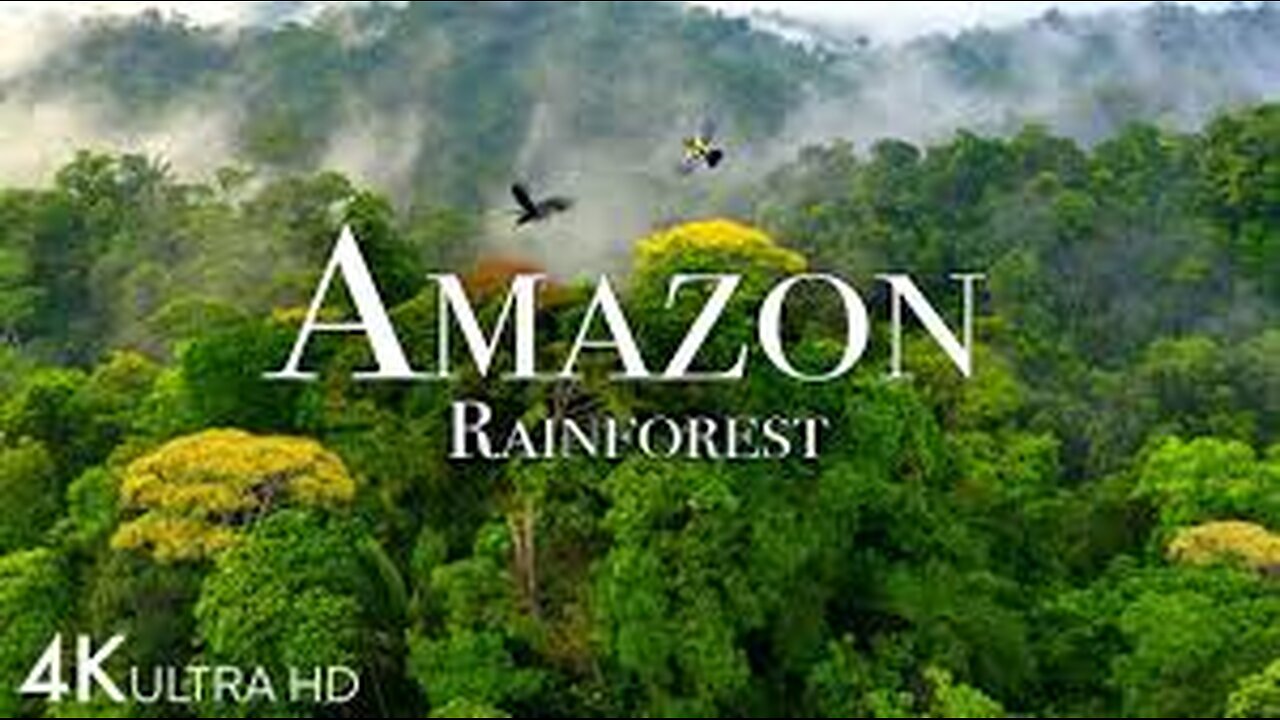Premium Only Content

The Wildlife Inhabiting the Heart of the Amazon Rainforest-Nature Videos of Amazon Jungle
The Amazon Rainforest is the largest rainforest in the world, covering an area of approximately 6.7 million square kilometers (2.7 million square miles) and spanning across multiple countries in South America, including Brazil, Peru, Colombia, Venezuela, Ecuador, Bolivia, Guyana, Suriname, and French Guiana.
Here are some key features and information about the Amazon Rainforest:
Biodiversity: The Amazon is home to an incredibly diverse array of plant and animal species. It is estimated that the rainforest contains around 390 billion individual trees representing approximately 16,000 different species.
Rivers: The Amazon River, the second-longest river in the world, flows through the rainforest, and its extensive network of tributaries makes it a crucial part of the ecosystem.
Climate: The climate in the Amazon is tropical and characterized by high temperatures and humidity. The region experiences a wet season and a dry season, with heavy rainfall during the wet season.
Flora: The Amazon Rainforest is known for its lush vegetation, including a vast variety of trees, plants, and flowers. Some iconic species include rubber trees, mahogany trees, and various types of orchids.
Fauna: The rainforest is home to an incredible diversity of wildlife, including jaguars, anacondas, capybaras, poison dart frogs, and a vast array of bird species. The Amazon River is inhabited by diverse aquatic life, including piranhas and pink river dolphins.
Indigenous Peoples: The Amazon is home to numerous indigenous communities, each with its own unique languages, cultures, and traditions. These communities have lived in harmony with the rainforest for generations, relying on its resources for their livelihoods.
Deforestation: The Amazon Rainforest faces significant threats from deforestation due to activities such as logging, agriculture, and cattle ranching. This poses serious environmental concerns, including the loss of biodiversity and the release of stored carbon into the atmosphere.
Preserving the Amazon Rainforest is crucial for global ecological balance and biodiversity. Efforts are ongoing to promote sustainable practices, conservation, and the protection of indigenous rights to ensure the long-term health of this vital ecosystem.
-
 17:19
17:19
SLS - Street League Skateboarding
16 days agoTop Moments from the Men’s Super Crown Final! Nyjah Huston, Giovanni Vianna and Gustavo Ribeiro 👑
4.16K -
 LIVE
LIVE
RG_GerkClan
2 hours ago🔴LIVE - Dominating One Raid at a Time - Escape From Tarkov - Gerk Clan
385 watching -
 LIVE
LIVE
Major League Fishing
2 days agoLIVE! - Bass Pro Tour: Stage 1 - Day 3
283 watching -
 1:49:43
1:49:43
Game On!
11 hours ago $1.18 earnedNFL Experts Top 10 Super Bowl Props!
5.23K2 -
 28:31
28:31
SB Mowing
1 day agoSiblings FEUD went so far the grass grew TALLER THAN THE HOUSE
18.6K4 -
 26:32
26:32
Stephen Gardner
13 hours ago🔥Tulsi Gabbard DROPS BOMBSHELL Obama Secret during hearing!
37.8K58 -
 16:13
16:13
Neil McCoy-Ward
23 hours agoWhat We're Not Being Told About The DC Plane Crash Tragedy
18.1K15 -
 11:24
11:24
IsaacButterfield
1 day ago $2.36 earnedWhy I Hate Gen Z TikTok
20.1K5 -
 11:27
11:27
RTT: Guns & Gear
19 hours ago $0.82 earnedX2 Dev Group - 14 5" Fluted Trident Barrel
13.3K1 -
 1:00:08
1:00:08
Trumpet Daily
22 hours ago $6.01 earnedDemocrats’ Greatest Fear Is Accountability - Trumpet Daily | Jan. 31, 2025
21.7K8